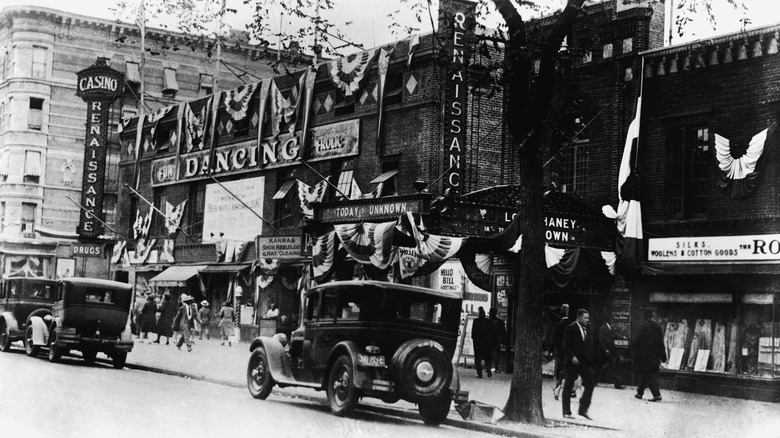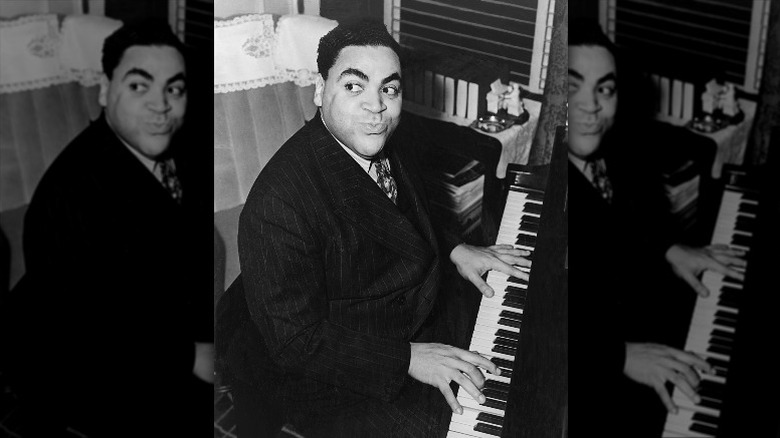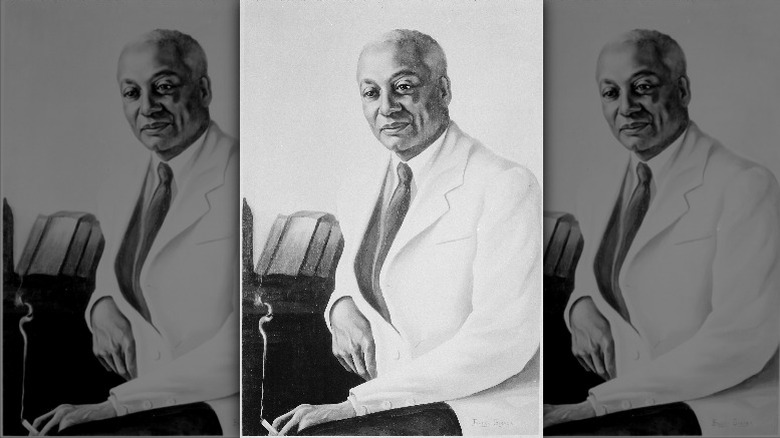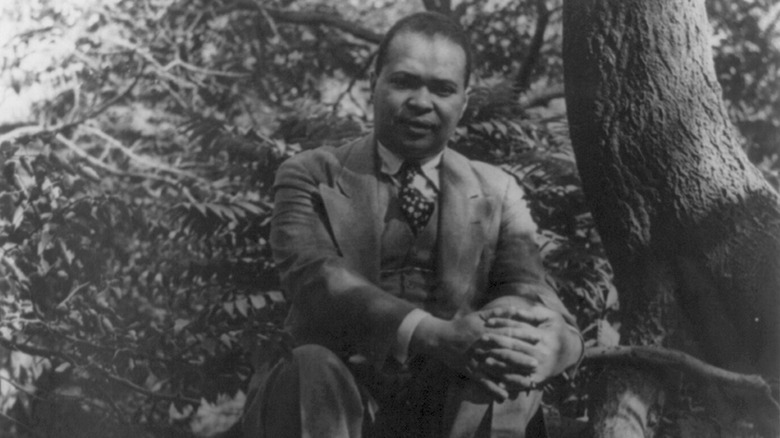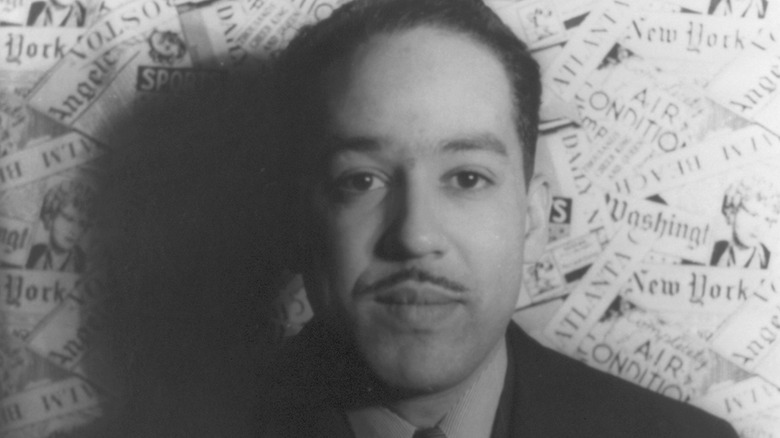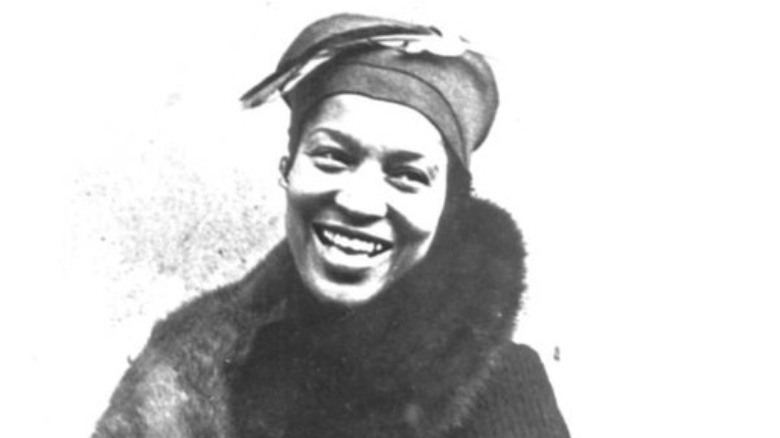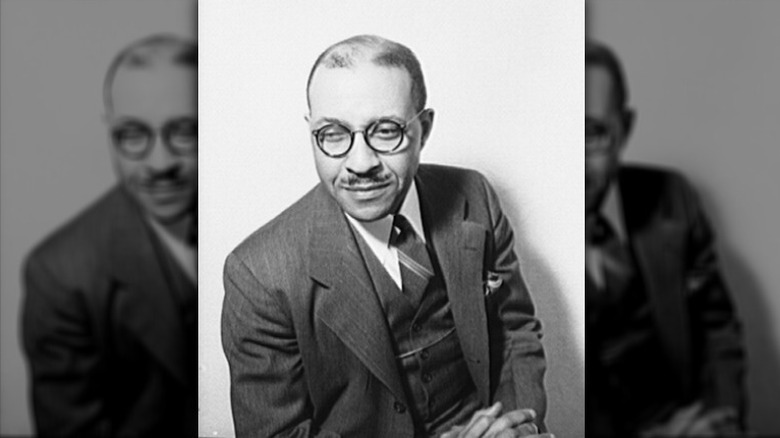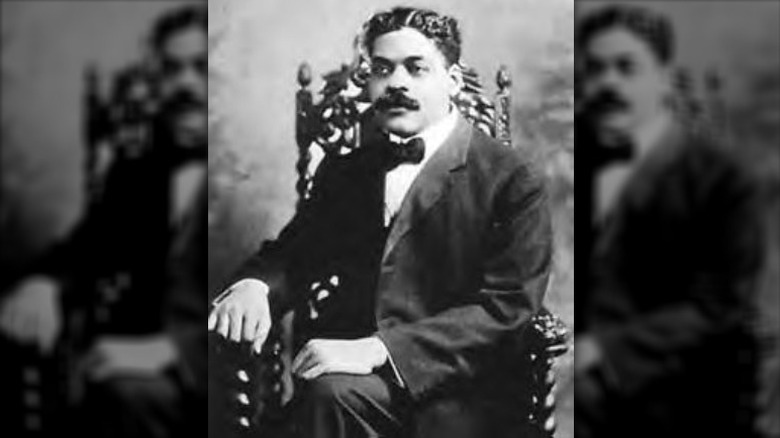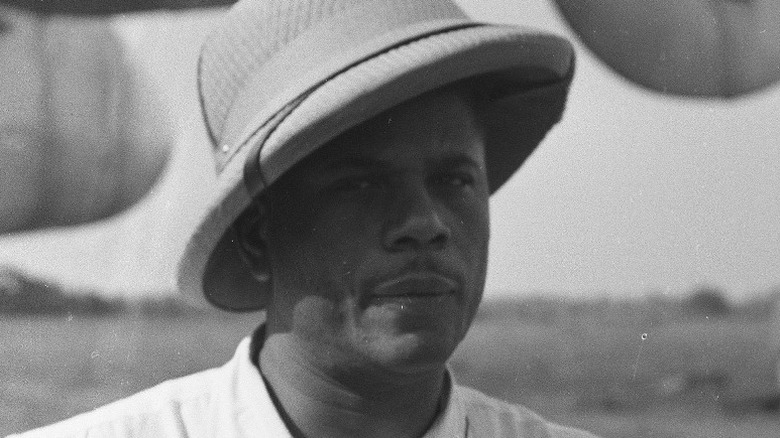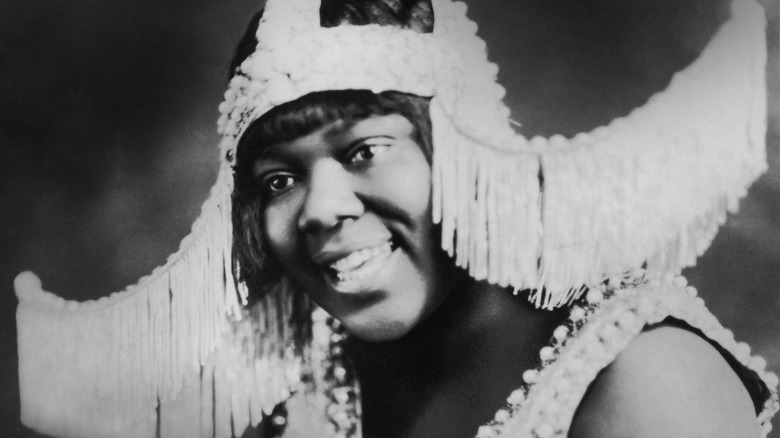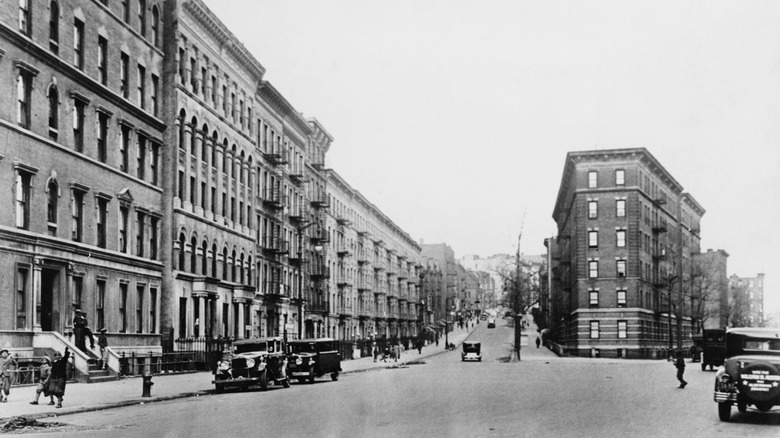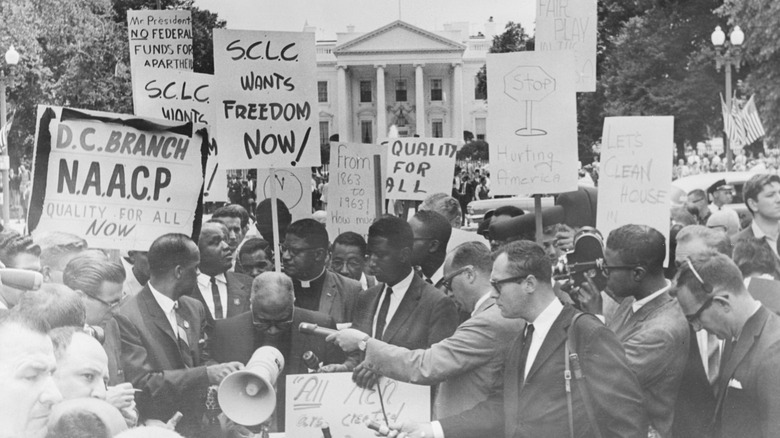The Untold Truth Of The Harlem Renaissance
The sense of importance attached to the Harlem Renaissance as a cornerstone of 20th-century American history only grows as the years go by. Precipitated by the Great Migration, in which millions of Black Americans left the segregationist South in search of greater freedoms, opportunity, and better work, many northern cities saw a blossoming of Black culture throughout the 1920s and beyond, the aftereffects of which are still keenly felt today.
What is little remembered about the Great Migration and the early days of the Harlem Renaissance is that though conditions in the North were better for some, the utopian dream of living in the North, West, and Midwest wasn't quite as it had seemed.
For one, good work was lacking; in fact, many Black workers were used as strikebreakers, not as valued employees, raising racial tensions. And the Red Summer of 1919 — in which Black veterans returning from World War I were attacked and killed by white mobs, including police officers in Chicago — deeply shocked many of those who had traveled north.
In the face of such civil injustice, the concentration of newly autonomous Black Americans in the North led to an explosion of cultural creation and political activism the country had never before seen. Black artists, intellectuals, and notables from a range of different fields found themselves in a closely bound network, exchanging ideas and participating in an optimistic envisioning of Black identity in the United States. Here are some little-known facts about the Harlem Renaissance.
The Renaissance emerged from parties
Per the writer and scholar Clint Smith, Harlem became the epicenter of Black culture in America as, after the first Great Migration, around 175,000 Black Americans settled in the tiny neighborhood, which at the time was just 3 square miles in size.
As professor Emily Bernard told the "You're Dead To Me" podcast, the artistic heart of Harlem during the 1920s was its "rent parties," gatherings in private homes with music — from premier jazz performers such as Fats Waller — dancing, and artistic events. These were called rent parties, as those who held them charged a door fee, allowing them to make money to pay the rent. At parties like these, artists networked and helped to establish the cultural milieu of the Renaissance.
But more formal gatherings had a seismic effect, too, especially on the literary arts. As described by the Poetry Foundation, a famous dinner at the Civic Club in 1924, at which premier intellectuals of the Renaissance, such as the literary critic Alain Locke, the poet Countee Cullen, and the sociologist W. E. B. Du Bois, promoted the Harlem Renaissance American literary establishment, opening up new opportunities and patrons for talented Black writers.
There were intellectual struggles
But the academics and intellectuals of the Harlem Renaissance weren't just critics looking to discuss Black art. Many, such as Pennsylvania-born Alain Locke, a distinguished Rhodes Scholar who had studied at the University of Oxford, were concerned with academic debates over race relations, which set former academic allies against one another. Locke, for example, believed in the building of Black identity and overtly addressing racial divisions, at a time when other figures like Countee Cullen believed that Black society and art should be "colorblind," per Clint Smith.
Moreso, Locke was almost a whole century ahead of the curve in his contemporary lectures on race theory. According to the Journal of Black Studies, Locke believed biological and anthropological factors ought to be relegated in discussions of race, while the "historical causes" was the subject that deserved more keen study. He also knew that prejudice itself was not a natural reaction to racial difference, but is fomented by the hegemony to sow discord among disenfranchised and subjugated people.
But such ideas didn't come to Locke fully formed. As noted by Leonard Harris, some academics have since claimed that for much of the Harlem Renaissance, Locke could've been considered an atavist: one who believes that different races hold fixed temperaments, though, as Harris argues, Locke's "naturalistic" atavism — as may be identified in certain turns of phrase — must be encountered in light of the wider historical context with regard to how race was generally discussed at the time.
The Harlem Renaissance was queer
But as well as the forging of a new racial identity for Black Americans, the Harlem Renaissance served as a safe haven for non-heteronormative people whose sexual identity was more readily accepted in the movement's progressive social environment. Per The New Yorker, Alain Locke had numerous relationships with men throughout his life, including many of the writers he promoted and anthologized as a critic and editor.
The famous poet Langston Hughes, who was bisexual, was one of the targets of Locke's affection, as was Countee Cullen. As told by writer and professor Emily Bernard, Cullen later married Yolande, the daughter of W. E. B. Du Bois, and the unusualness of the marriage was no secret. In fact, newspapers reported that the famous poet had gone on his honeymoon with his best man, rather than with his new wife.
Similarly, many of the leading performers of the Harlem Renaissance, including Bessie Smith, Ma Rainey, and Gladys Bentley were open about their bisexuality, while cross-dressing performances — including those in which women impersonated men — drew large audiences in New York and elsewhere (via PMLA). As A. B. Christa Schwarz, author of "Gay Voices of the Harlem Renaissance," noted, the queerness of the movement was little studied during the 20th century, though this has changed in recent decades to be acknowledged as one of its central facets.
Langston Hughes' big break
Langston Hughes is known not only as perhaps the greatest writer of the Harlem Renaissance but also as one of the most transformative poets of American letters. One of the most impactful pieces of writing Hughes published during the 1920s was an essay titled "The Negro Artist and the Racial Mountain," a rallying call to Black artists to embrace representations of themselves as they truly are: "to express our individual dark-skinned selves without fear or shame. If white people are pleased we are glad. If they are not, it doesn't matter. We know we are beautiful. And ugly too" (via Poetry Foundation). And the poet was equally strident in catching the attention of the literary gatekeepers who could get him published.
Hughes had worked countless menial jobs and traveled as far as Europe and Africa as a sailor before making his name as a poet. And it was while working as a bus boy at a Washington D.C. hotel that Hughes engineered his big break. He spotted that one of the guests that day was the famous poet Vachel Lindsay, and Hughes — though nervous — set three of his own poems down on Lindsay's table while serving him dinner. Lindsay was overwhelmed by Hughes' work, so much so that he read them aloud at a performance that same night.
Zora Neale Hurston debunked racialism
Another prominent writer of the Harlem Renaissance was Zora Neale Hurston. Hurston's literary accomplishments weren't properly recognized in her own lifetime, though her influence has grown since, with her 1937 novel, "Their Eyes were Watching God," today considered her crowning achievement.
Hurston was a heroic though divisive figure in her own lifetime. As Mary Jane Lupton wrote in The Southern Literary Journal, Hurston is celebrated for her portrayals of the Black rural South and of Black women in particular in their battle for agency in the American society of the day. However, as the academic Jennifer Jordan notes, contemporary intellectuals struggled to reconcile her "contradictory" views of race and class, which, while she offered invigorating accounts of the lives of strong Black women in her writing, saw her opportunistically embrace the patronage of wealthy white benefactors and hold ambivalent views with regard to racial segregation. Hurston's authenticity has also been brought into question with the revelation that throughout her life she presented herself as being 10 years younger than she actually was.
Nevertheless, the writer and folklorist contributed greatly to anti-racism in other ways. Per NPR, Hurston worked with the pioneering German anthropologist Franz Boas to help disprove the widely held belief that humanity was made up of fixed racial types, with set temperaments and abilities — a view that's now known as "racialism." For field research, Hurston stood on the streets of Harlem measuring the craniums of passing pedestrians, gathering vital data to disprove the theory.
'Opportunity' proved the value of Black writing
At the start of the Harlem Renaissance, the white literary establishment considered the best that Black writing could offer was primitivism and novelty. However, over the course of the 1920s, publishing's attitude to Black writing — and America's taste for it — changed dramatically. Much of that change came thanks to Opportunity, an influential journal founded by the National Urban League in 1923 and edited by Charles S. Johnson (pictured).
According to the journal Phylon, Opportunity wasn't the first magazine to publish Black writers. The first great publication of the Harlem Renaissance was The Crisis, founded by W. E. B. Du Bois, which had been publishing the work of Black writers as early as 1920. However, where The Crisis had previously called for a "renaissance" of Black American letters long before Opportunity was founded, the latter magazine became the organ for a literary "revolution," organizing a "coming out party" for Black talent and placing their work in full view of the editors of the biggest American literary publications of the era.
Wealthy patrons lined up to supply Opportunity with large donations to use as prizes for writing contests. Langston Hughes won for poetry in 1925, precipitating the publication of his first collection, "The Weary Blues," the following year. Arna Wendell Bontemps won the competition in 1927. Nevertheless, naturalistic Black writing, such as Hughes', continued to have its critics, with fellow poet Thomas Millard Henry commenting that "the story 'The Weary Blues' is not poetry" (via Phylon).
The pioneering of Black history
"The Negro has been a man without history because he has been considered a man without worthy culture." These are the words of the Afro-Puerto Rican academic and archivist Arthur Schomburg, whose contribution to the preservation of Black culture was incalculable (via the New York Public Library).
Schomburg was raised by his Black mother and German father in Puerto Rico, and developed a childhood love of literature, art, and learning. However, he was disturbed by the absence of Black history in the classroom. Having affiliated himself with the Cuban Revolution Party in his youth, Schomburg moved to New York at the age of 17, where he established a vast collection of cultural materials from across the Black diaspora, including art and literature, which became the largest such collection in the world. Revered by many leading figures of the Harlem Renaissance, Schomburg's collection was purchased by the New York Public Library in 1927 and remains a vital source for researchers of Black history. Schomburg was also instrumental in the development of Fisk University Library, contributing to designs for the building and expanding their collection of Black cultural materials exponentially.
At the same time, an influential generation of Harlem Renaissance photographers was turning its lens on Black subjects. Carl Van Vechten was immortalizing the leading figures of the movement, while others such as James Van der Zee were making the real lives of Black people the subject of photography for the first time, challenging preexisting racial stereotypes.
'The Black Eagle of Harlem'
Along with academia and the arts, many notable Black figures were making waves in many other fields. One of these was Hubert Fauntleroy Julian, a talented Trinidadian aviator whose showmanship earned him a glorious nickname: "The Black Eagle of Harlem."
Per Smithsonian Magazine, Julian was a pioneering pilot who was attempting to stage adventurous transatlantic flights in the same era as his contemporary Charles Lindburgh. He studied in London and Montreal before heading to New York, where, in his most famous stunts, he parachuted twice over Harlem: once dressed as a devil and once while simultaneously playing the saxophone.
The legend of the Black Eagle of Harlem was so well known that in 1930, the aviator was invited by Haile Selassie, the soon-to-be emperor of Ethiopia, to perform an air show in celebration of his coronation. However, according to the Smithsonian, the trip was a disaster: During a rehearsal, Julian lost control of his plane and crashed into a tree, an incident that he blamed on sabotage by the Ethiopian air force.
Julian's achievements remain underappreciated compared to those of his contemporaries producing music, art, and the written word, but his life work deserves to be remembered as a vibrant symbol of the overwhelming sense of optimism that characterized the Harlem Renaissance.
The Renaissance's influence on music
Though many styles of music were played during the Harlem Renaissance, one genre is synonymous with the period more than any other: jazz. Duke Ellington, Billie Holiday, Louis Armstrong, and countless others emerged during those years and performed regularly in the Harlem area.
Blues was also a notable genre during the 1920s, with many influential performers, including Bessie Smith (pictured) and Ma Rainey, amassing huge followings and enjoying considerable commercial success. Some academics have characterized the music of the period as "blues-jazz," noting the two genres interlink, explaining that jazz is an instrumental counterpoint to the blues, which has its roots in gospel and work songs. The music of the period had a great influence on other art forms as well, with writers such as Langston Hughes characterizing their own work as "blues" poetry.
But as noted by Clint Smith, the influence of the two genres can still be felt today, with other American musical styles, such as country, rock, pop, and hip-hop, incorporating elements of the music of the Harlem Renaissance and making it new.
The end of the Harlem Renaissance
Throughout the 1920s, the Harlem Renaissance was fueled by an abundance of disposable income, with many working people having enough money to visit clubs and go to concerts; many wealthy people, meanwhile, who were interested in the arts, were in a position to lavishly patronize talented Black artists in many fields. However, all that changed in 1929, when the stock market crash triggered the Great Depression, an economic downturn that persisted throughout the 1930s. And as chronicled by the Poetry Foundation, many Black Americans were among the first to fall into poverty amid widespread layoffs.
The boom that propelled the cultural blossoming of the 1920s eventually fizzled out, while many historians now argue the optimism that characterized the age was swept away in 1935, with the events of the Harlem Riot. On May 19, with tensions rising in the neighborhood amid shop closures, mass unemployment, and rising rents, widespread violence ensued after a rumor spread that the local police had murdered a teenager accused of shoplifting (via Britannica).
As reported in "Race, Space, and Riots in Chicago, New York, and Los Angeles," the rumor proved untrue and the event was quelled after 24 hours. However, the "disturbance" led to dozens of arrests, as well as injuries to more than 55 civilians and several police officers, and one fatality: a teenager who hadn't participated in the Harlem Riot but who was fatally shot by the police while returning home from the movies.
While there was an official investigation into the riot, the report was never released to the public. One of the reasons cited was that the report too openly detailed the dire condition of Harlem at the time, and the poverty of many of its residents.
The afterlife of the Renaissance
As explained by History, though a bright and optimistic age in Black history had come to an end by 1935, the legacy of the Harlem Renaissance carried on, with ideas and perspectives that first came to light during the period — those put forward by people such as Langston Hughes, Alain Locke, Arthur Schomburg, Zora Neale Hurston, and countless others — paving the way for the Civil Rights movement that would emerge in the decades that followed.
Though the Great Depression ruined the livelihoods of many of the figures of the Harlem Renaissance, the spirit of the age continued to have an effect in America and beyond. The pioneering work of visual artists like Aaron Douglas and Archibald John Motley Jr. during the Renaissance set the stage for later flowering, such as with the Black Art Movement of the 1960s.
Harem Renaissance figures also had links to places outside of America, such as Paris, a city many artists including Langston Hughes and Alain Locke visited throughout their lives. Their presence is still felt in the city today (via Smithsonian Magazine).
